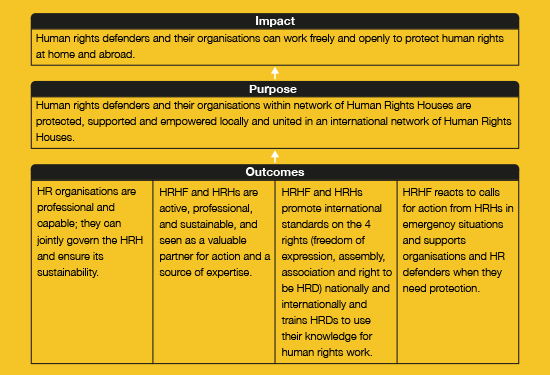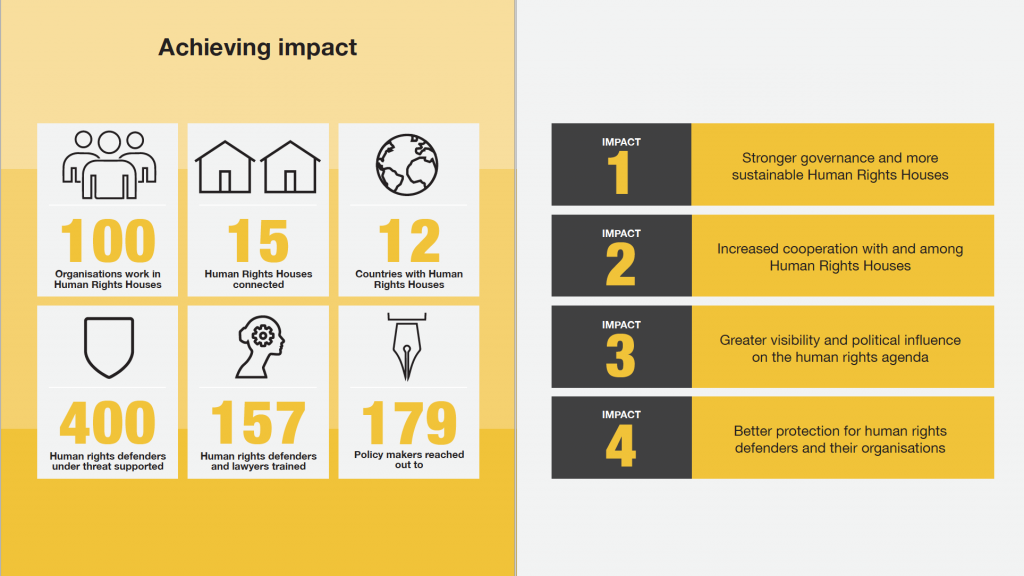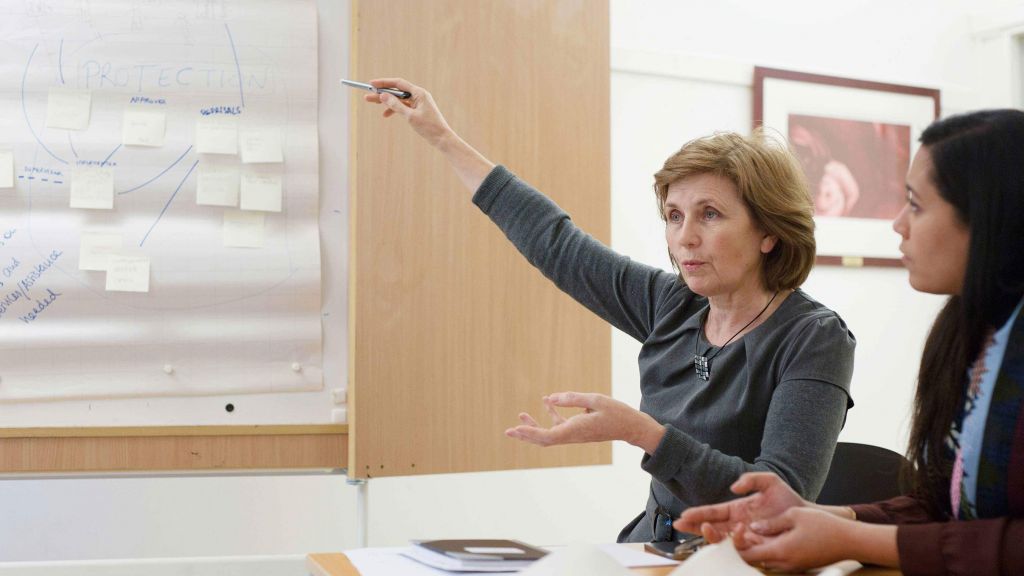Changes in a human rights situation take time, are challenging to attribute to a particular initiative, and are all too often affected by external factors, which may cause the situation to remain unchanged or deteriorate for the worse, despite our best efforts.
Today, donors require reporting on impact, preferably in numbers and charts, yet the logic of fast news and simple messaging can be somewhat contradictory to how we achieve impact in human rights work. A results framework can turn the demands for reporting into a tool to navigate, operationalise and achieve impactful strategies for a human rights organisation.
Daiva Petkeviciute, Administration and Fundraising Manager at HRHF, has led the process of building the framework in order to measure the impact of our 2014-2018 strategy. To appoint one person to lead the process is one of the important lessons learned. We are all busy and pressed for time in our daily work, and the development of the results framework is a long process that demands people to focus on something other than their core area. With this in mind, it is key to appoint a leader who keeps pushing forward, does work in-between organisation-wide meetings and pulls everyone back when the focus starts to drift.
It is also essential to pursue an inclusive process involving all staff, in order to build a tool for the organisation to use, rather than end up with a framework on paper on a shelf somewhere. Petkeviciute guides us through the process at HRHF and shares some more important lessons learned:
While the results framework is not the answer to everything and it is not perfect, HRHF clearly sees the benefits, above and beyond accountability and efficiency. Based on our experiences, we recommend for other organisations to consider such a framework, especially those currently developing their strategies.

Linking goals with outcomes at the beginning of the process in June 2015.
Our framework is rooted in the theory of change and framed by the organisation’s strategy for 2014-2018. Making our desired long-term goals the starting point, we worked back from these identifying what objectives, outcomes, and activities (outputs) would lead to the desired change and ultimately to achieving our goals. We then created indicators to measure these outcomes and outputs. In short, the framework seeks to link and measure all activities in the context of the organisation’s goals.
 HRHF’s results framework 2015-2018.
HRHF’s results framework 2015-2018.
Once we had the framework set, we could then look at indicators and benchmark where we are currently and set targets within these indicators, ensuring everything we do is working toward our strategic objectives. Within the framework, we also set responsibility for these targets, when they should be reported on, and what sources we will use for gathering information and data.
At HRHF, we began by hiring an external consultant to learn more about the process. This was not with the aim to create the framework for us, but rather to teach us about the theory of change and about the process of building the framework.
 Discussion on the results framework at HRHF’s internal meetings (Kety Abashidze pictured).
Discussion on the results framework at HRHF’s internal meetings (Kety Abashidze pictured).
Just like any other policy, strategy, or framework, this would have been worthless if it remained on paper. HRHF’s approach to ensuring that the framework becomes an actively used tool was to involve every single employee in the process of creating it. Right from the outset, everyone was invited into the process and given an opportunity to contribute, ask questions, and challenge one another. From the first meetings to the results framework’s approval by the HRHF Board, the process took us about a year. It was a year of learning about the theory of change, giving input through written questionnaires that all staff filled in, and holding several all-staff meetings to share the learnings and discuss what kind of change we are expecting to create and how to get there. This meant some difficult discussions trying to reach a consensus and selecting what is more important.
By the time the results framework was set, everyone had a sense of ownership, and could recognise their own contributions to the organisation’s goals and understand how the framework is a tool in their work. This ownership in itself has been a major benefit of the framework. It has helped staff to see their part in the wider puzzle, understanding their activities in the context of broader organisational objectives.
Significantly, the framework has also provided the basis for some of our external communication. When it came to producing our annual report for 2016, for example, we took the measures of achievements from the framework as the basis for the facts and figures we would communicate.
 Achieving impact, HRHF and Human Right Houses annual report 2016.
Achieving impact, HRHF and Human Right Houses annual report 2016.
The results framework has also helped HRHF communicate more clearly with our main stakeholders about the impact that our work has. Simply put, the framework allows us to focus on what we achieve rather than on what we do.
More than this, the tool has become essential in our planning and management. It has helped us to be more disciplined in creating new projects and evaluating existing ones. We are able to better prioritise based on what is likely to have the biggest impact. It helps us to determine what we should pursue from among the many great causes in human rights work in order to best achieve our goals.
At the human resources level, it has helped us to team up staff from various programs to work toward a common goal, reducing internal tensions for finances and time, and contributing to a real and measurable change.
Contact Daiva Petkeviciute for more information on HRHF’s reporting and the processes it has in place to ensure it has impact in its work, and that it reports professionally and transparently on its achievements: daiva(at)humanrightshouse.org.
HRHF strategy and results management framework
Together with the network of Human Rights Houses, we have long-term strategies that guide us in our efforts to protect, empower and support human rights defenders and their organisations. To increase accountability to our donors and ensure we make the most efficient use of the donations possible, we introduced the use of a results management framework at the Human Rights House Foundation in 2015.
Results management
In-depth guides on results management are provided by organisations such as the Norwegian Agency for Development Cooperation (NORAD).





